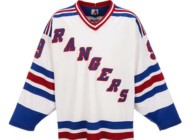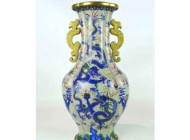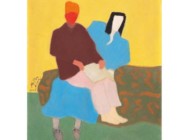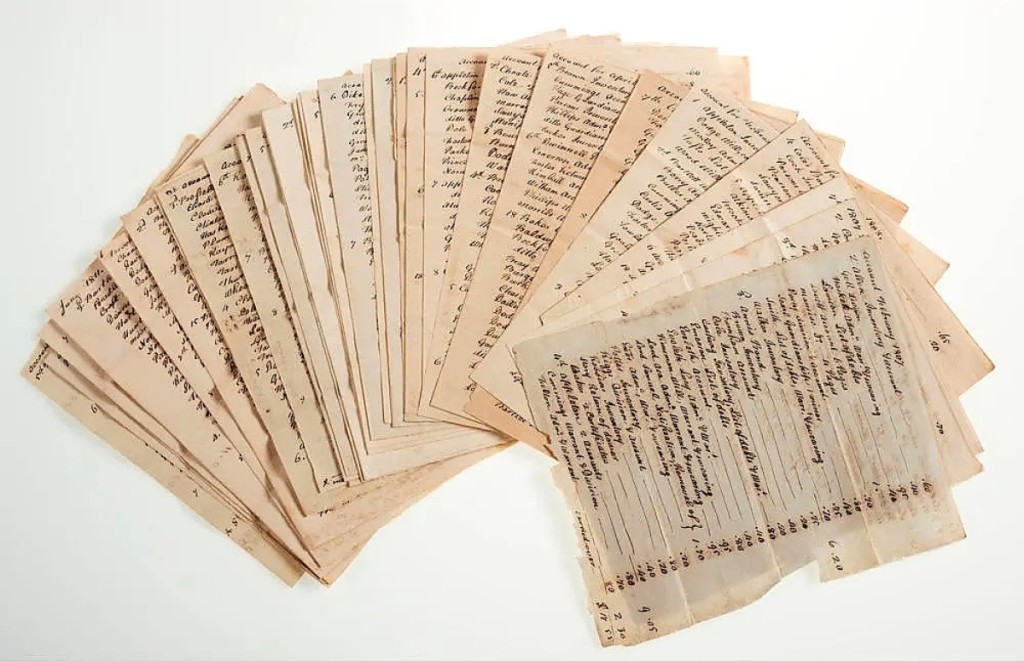
An archive of draft copy letters from Massachusetts statesmen Dr Samuel Holton sold for $46,875, the top of the sale. It comprised more than 200 written letters to Holten’s family, peers and fellow politicians. Holten represented his state as a delegate to the Continental Congress and as a member of the US House of Representatives. He was also a state representative, serving in the Massachusetts Senate seven years and the House of Representatives for one. The papers span the years 1741-1815, though the bulk were written in the final years of the Revolutionary War and in the nascent years of Massachusetts statehood when its constitution was formed.
Review by Greg Smith
CINCINNATI – Cowan’s June 25 American Historical Ephemera & Photography auction finished at just over $705,000 in gross sales as it weaved through American history through its documents, manuscripts, flags and images.
The sale offered the Civil War collections of Dennis C. Schurr and Richard B. Cohen, with additional photograph offerings from Eugene Groves and various other consignors.
A buyer paid $46,875 for a 200-plus draft copy letter archive related to Dr Samuel Holten, a Danvers, Mass., physician who represented his state as a delegate to the Continental Congress and as a member of the US House of Representatives. He was also a state representative, serving in the Massachusetts Senate seven years and the House of Representatives for one. The auction house noted that much of the correspondence dates to the later years of the Revolutionary War and the early years during which the Massachusetts state constitution was written, though there were a few examples from 1741, 1749 and the 1760s.
“You just don’t see such large assemblages of documents like this that are relevant to an early historic figure like Holten,” said Katie Horstman, Cowan’s senior specialist. “We’ve had the pleasure of handling manuscript archives of incredible figures, but this is an early person involved with the Continental Congress and Revolutionary War.”
A professor who collected autograph material acquired the archive privately during his time teaching. The draft copies relate to various letters written by Holten that have made their way into institutional collections. The archive was purchased by a private collector.
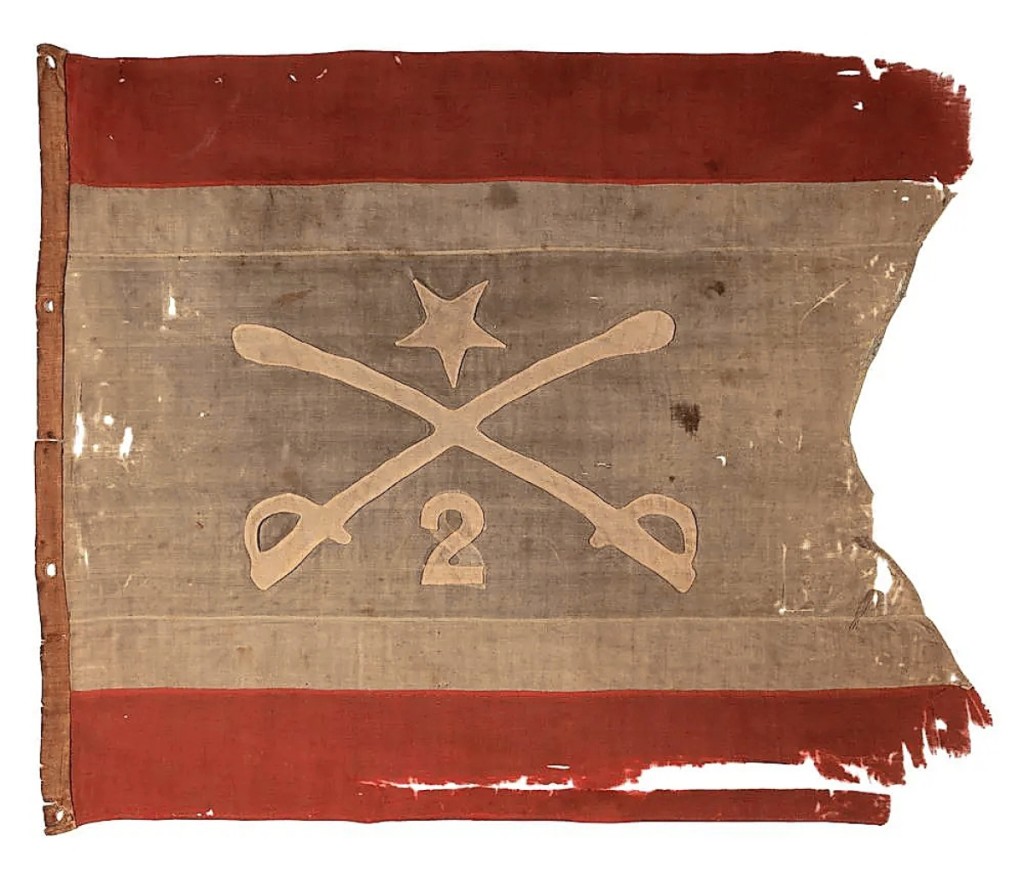
Philip Henry Sheridan’s headquarters flag during his time with the 2nd Michigan Cavalry sold for $40,625. It had been given to an Elks Lodge in Niagara Falls, N.Y., by G. Edwin Sawyer, the son of Nathanial Sawyer, who personally knew Sheridan in his role as paymaster.
A trash-to-cash story came in the form of the personal headquarters flag of Philip Henry Sheridan, leader of the entire cavalry of the Union Army of the Potomac, which brought $40,625. The flag was made and flown in the summer of 1862, when Sheridan led the 2nd Michigan Cavalry. In just six months, the catalog noted, Sheridan rose from Captain to Major General. An engraved plate attached to the original displayed frame noted that the flag was given to the Elks Lodge in Niagara Falls, N.Y., by a brother named G. Edwin Sawyer. It was thrown in the trash in a 1960s clean-up, only to be rescued by the club’s manager and given to a man in Youngstown, N.Y. It passed to another man until it entered the market in 1999. Horstman noted that records for G. Edwin Sawyer indicate he was the son of Nathaniel Sawyer, a paymaster who paid Sheridan’s army at least $3 million and even accompanied the army in 1965 on raiding missions, which were successful in returning $250,000 stolen from Sheridan’s army by the Confederate unit, Mosby’s Raiders.
Made of Merino wool, Horstman said Sheridan’s flag was unusual in its construction – many were made of silk. “These scarcely come to market,” she said. “And that it was Sheridan’s – he was one of the most popular generals of the Civil War, among the fastest rising leaders.”
Top among any photograph was a $31,250 result for a half-plate daguerreotype featuring Dutch immigrant Walter Van Erven Dorens in full firefighter uniform during his service to the Sansome Hook and Ladder No. 3, founded in San Francisco in 1850 and disbanded ten years later. Van Erven Dorens is listed on the role from 1854 to 1855, a time in which Cowan’s noted the company’s ladder truck “was the largest in the state and carried 50-foot ladders.”
Together with Mike Novak, a historical firefighting historian who consulted on the example, the firm was able to produce new research to identify the figure. The belt was easy enough, it said “Sansome” quite clearly. But the initials on the hat would prove more difficult. When the “WVED” became clear to Novak, a check through the fire company’s records revealed Van Erven Dorens as the subject.
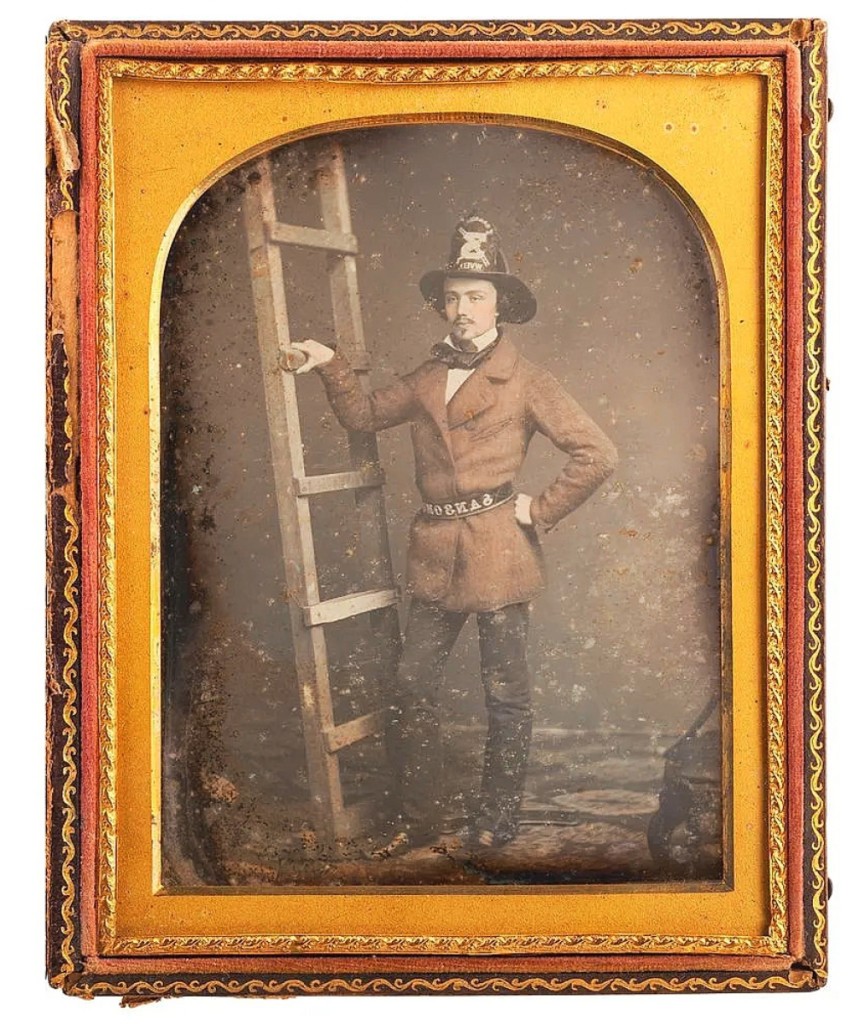
There were plenty of desirable aspects to lure in early photography collectors to this half-plate daguerreotype that brought $31,250. It features firefighter Walter Van Erven Dorens, a Dutch immigrant who arrived in California for the Gold Rush. He wears the uniform for the Sansome Hook and Ladder No. 3 of San Francisco, listed on its registry in 1854. The daguerreotype surfaced in the Netherlands and had never been on the market before.
Crossover interest built momentum for the image, which may have been taken by either Robert H. Vance or James Ford, both of whom had studios within a few blocks of the firehouse. Early California Daguerreians command a premium. It is also thought that Van Erven Dorens came to California to participate in the Gold Rush, another popular collecting category. That it was a large half plate was also desirable. The daguerreotype was found in the Netherlands, had never been offered at auction, and was professionally conserved this year.
Other notable daguerreotypes included a previously unknown image of Zachary Taylor, which brought $16,250. The wild-haired future president is seen with a solemn expression as he looks away from the camera. An inscription to the back of the case reads “Taken in Camp near Baton Rouge La, in 1845 by D.C. Butchart.” Horstman wrote that this was believed to be a period copy enlargement of a previously unknown portrait. She thought it might have been taken near Fort Jessup while Taylor was awaiting orders to move south. Little is known of Butchart, though he is listed in Darrah’s Photographers of the United States of America as a Canadian active in Philadelphia. A previous 1871 census listed him working in Ontario.
Twenty-seven stereoviews by photographer John Corbutt documented Union Pacific’s commemorative press tour, the “Excursion to the 100th Meridian.” After the Pacific Railroad Act was signed in 1862, work began in earnest by Central Pacific Railroad and Union Pacific, the former in charge of building eastward from Sacramento and the latter building westward from Omaha, Neb. Just four years later in 1862, the 100th Meridian was reached and Thomas Durant, the vice president and general manager of Union Pacific, organized a tour for VIPs, politicians and reporters to travel out on train and witness the ceremonial driving of a gold spike. Among the VIPs was Mary J. Graff, a relative of James Harvey Simpson, chief topographic engineer for General Johnston’s Army of Utah. These stereoviews were from her collection and sold for $17,500. A contemporaneous note included with the lot wrote of the event’s unanticipated end: “The purpose of this trip was the celebrating of the reaching of the 100th Meridian where it was intended to drive a golden spike! But word came that the Indians were on the war path. The party was hustled back out of danger and Cousin Mary never did see this ceremony (if it ever did take place).” In 1969, when the railroads finally met in Promontory, Utah, a golden spike was driven.
Selling for $10,000 was a sixth plate daguerreotype featuring a previously unknown image of Amasa Turner, a Texas pioneer who rose to the rank of Lieutenant Colonel of the First Regiment of Infantry in the Texas Revolutionary Army. Turner saw combat at San Jacinto and went on to command the post on Galveston Island.
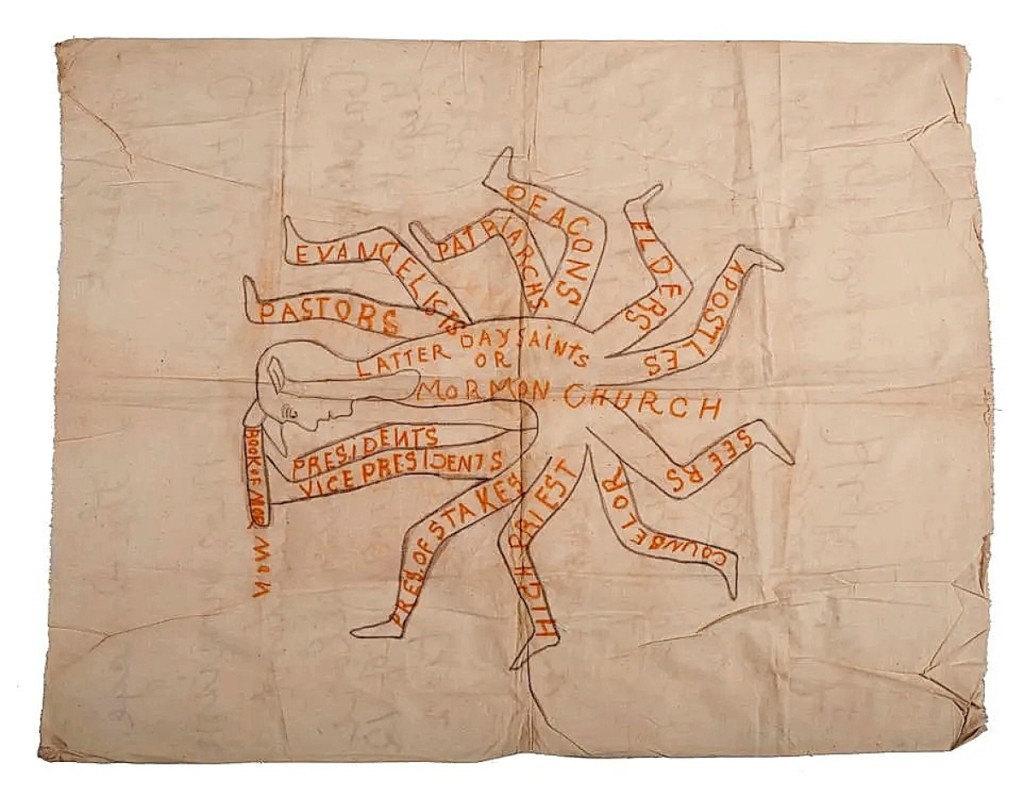
Among Horstman’s favorite lots in the sale was a run of banners related to the Third Great Awakening. Probably used in the revival tents used by traveling evangelists, these banners conveyed the symbolic imagery and messaging of their respected faiths. This example featured a 12-legged figure with the various roles found in the Church of Latter Day Saints. It sold for $4,160.
Printed works were led at $16,640 by Ferdinand V. Hayden’s Sun Pictures of Rocky Mountain Scenery. Cowan’s called the first edition “One of the classic books of the American West and a landmark in the use of actual photographs.” Hayden’s work features 30 mounted albumen photos by A.J. Russell and documents a geological tour of the Union Pacific Railroad line prior to 1870.
Richard Cohen’s Civil War collection featured a focus on US Naval operations, counting among its value the signatures of famed military leaders Abraham Lincoln, Ulysses S. Grant, Jefferson Davis, W.T. Sherman and Admiral Farragut. Selling for $6,875 was a letter from Sherman to Admiral D.D. Porter, Commander of the Mississippi Squadron during the Vicksburg Campaign. Sherman recounts the movements of Confederate gunboats as they sunk the Cincinnati. A Lincoln-signed endorsement recommending Ulric Dahlgren for a captain commission would sell for $8,385. Farragut’s letter, written four days after the Union victory at the Battle of Mobile Bay, described the battle through its ups and downs. It sold for $4,063.
Among Horstman’s favorite lots was a run of banners related to the Third Great Awakening, works used to decorate the evangelical revival tents that sprung up around the country in the early half of the Twentieth Century. These banners featured illustrated scenes of salvation and symbolism as well as message-based themes to attract followers. The graphic banners seemed to do better, with $4,160 paid for a banner depicting a 12-legged man labeled “Latter Day Saints or Mormon Church” which Cowan’s wrote may have been a reference to the Quorum of the Twelve Apostles.
Cowan’s next American Historical sale will offer the Civil War collection of James C. Frasca November 12, followed by a various owner sale November 15.
All prices reported include buyer’s premium. For information, www.cowansauctions.com or 513-871-1670.


























